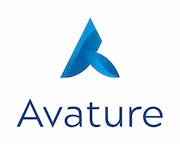Are you looking for the best workforce management software? Our comprehensive buyer's guide has everything you need to know to streamline your HR processes and maximize efficiency. Explore now for expert insights.
Workforce management has become more critical than ever to ensure the success of a company. A software can automate manual processes, unlock data-driven insights, and improve overall workforce productivity. With a wide range of software options available, selecting the right WMS can be a challenging task. However, investing in a comprehensive workforce management solution can lead to a streamlined workforce, increased employee satisfaction, and ultimately, a more successful business. In this guide, we will provide you with important information to consider when choosing such a tool, including features, benefits, and tips for creating a successful implementation plan.
What is workforce management software?
Workforce management software (WFM) provides a comprehensive system that simplifies time-consuming HR tasks and helps managers make informed business decisions. It features modules that encompass various HR functions, including scheduling, time and attendance tracking, employee performance management, and payroll management.
Listed below are some of its common use cases:
- Time and attendance management: A WFM tool helps companies to manage employee attendance, absence, and leave applications while eliminating inaccuracies and manual errors associated with traditional pen and paper methods.
- Employee scheduling: Businesses are able to easily build and manage employee schedules, ensure coverage of all shifts, and avoid over/under-staffing.
- Skill and performance management: The software allows you to keep track of employee skills, performance, and training requirements. Identify skill gaps and provide appropriate training.
- Payroll and benefits: It allows you to manage employee compensation, automate payroll processing, and ensure that employee benefits are accurately tracked and distributed.
- Compliance and reporting: The system ensures adherence to local and federal labor laws and regulations, maintain accurate employee records, and generate reports easily.
A wide range of companies across various industries use workforce management technology, including manufacturing, healthcare, hospitality, retail, and financial services. Small businesses, mid-size businesses, and large enterprises can all benefit from implementing such a solution.
What are the advantages of investing in a workforce management tool?
WFM technology offers a wide variety of benefits and here are some of the main ones:
- Improved productivity - With a workforce management application, businesses can ensure optimal utilization of their resources, which results in improved productivity across the organization. It enables managers to align their workforce with the business objectives and capitalize on their strengths to boost productivity and reduce waste.
- Better compliance - By automating the complex task of regulatory compliance, workforce software allows businesses to focus on their core objectives rather than the challenges posed by compliance. It helps organizations remain compliant with regulatory requirements while reducing the risk of penalties and audit failures.
- Reduced labor costs - Labor costs are a significant expense for businesses, and an effective workforce management program helps organizations optimize labor costs. It provides real-time visibility into employee schedules and performance data, enabling managers to make informed decisions about staffing levels, overtime, and labor allocation.
- Improved employee engagement - It streamlines employee management tasks like scheduling, shift allocation, and attendance tracking, which provides employees with greater work-life balance and improves their engagement levels. It also helps reduce absenteeism and improve overall employee satisfaction. Recent trends have shown that 23% of the global workforce is engaged at work, while 59% of employees are “quiet quitting,” making it essential for HR leaders to improve the employee experience.
- Enhanced customer service - With a workforce solution, businesses can ensure that they have the right people in the right place at the right time to meet customer demands. This improves customer service levels and reduces the risk of customers turning to competitors.
10 key features of a workforce management solution
WFM is an indispensable tool which comes with specific key features. Here are 10 common ones that you are likely to find:
1. Employee scheduling: The software allows you to create and manage employee schedules. You can schedule shifts, assign tasks to employees, and handle last-minute staff changes.
2. Time tracking: From tracking employee work hours to managing overtime, the system automates time tracking to reduce errors.
3. Absence management: This feature helps you manage employee absences such as sick days, vacation time, and other necessary leave types.
4. Labor forecasting: A labor forecasting function helps you predict workforce needs based on your historical data and trends. You can better align staffing with demand, avoiding over or understaffing.
5. Task management: This element allows companies to manage employee tasks, monitor completion rates, and ensure staff productivity.
6. Employee self-service: The solution allows staff to access their personal information, such as their current schedule, eligibility for leave, and other relevant HR data.
7. Mobile access: Many workforce management software solutions come with a mobile app, making it easier for employees to check their schedules, punch in and out, and request time off, simplifying routine processes.
8. Compliance management: It ensure that your business complies with labor laws and regulations by setting up transparent and fair labor practices for your employees.
9. Reporting and analytics: The application provides intelligent insights and powerful analytics tools you can use to gain visibility into your workforce, staff performance, and overall labor costs.
10. Integration with other systems: It can also seamlessly integrate into other business systems like payroll, HR administration, and accounting software, providing your enterprise with a comprehensive suite of tools.
Things to consider when investing in a workforce management platform
Choosing the right solution that meets all of your business needs can be an overwhelming task, especially when there are so many software options to choose from. Here are some important factors to consider before purchasing a workforce management app:
1. Business size: The size of your business can determine which solution is best for your company. Some solutions may be more suitable for smaller businesses, while others are better for larger enterprises.
2. Flexibility: Look for a tool that is flexible enough to accommodate your company's unique needs and can grow as your business expands. Your system should be able to integrate with other systems like HR, scheduling, payroll, and time and attendance.
3. User-friendliness: Your employees should be able to use the WFM program easily without needing extensive training. Choose one that has a user-friendly interface, simple setup, and provides adequate support and documentation.
4. Customization: Every business has unique needs; and it is important to choose a solution that offers the flexibility to customize your workflows to fit your specific business processes, rules, and strategies.
5. Mobility: Having the ability to access your workforce management system on-the-go is essential, so ensure that you select a solution that enables remote access through mobile devices. 91% of respondents in a survey reported having a positive and satisfactory experience with remote work, highlighting the effectiveness of workforce management software in supporting remote teams.
6. Reporting and analytics: A good WFM system should enable you to generate real-time reports and analytics that provide insights into your workforce performance, costs, and productivity.
7. Cost: Workforce management software can be a significant investment for a business. Consider the long-term costs of ownership, such as maintenance, support, and upgrades.
Industry trends for workforce management software
Workforce management solutions are a crucial tool for businesses looking to optimize their efficiency, employee productivity and satisfaction. In 2024 and beyond, several major trends dominate this industry, and this section will explore these crucial developments in detail:
AI and machine learning are revolutionizing the way businesses manage their workforce. These technologies can help predict employee behavior and preferences, streamline scheduling and task allocation, and even provide personalized training and development programs.
Meanwhile, mobile-first solutions are becoming increasingly popular, allowing employees to access scheduling and task management tools on the go, and empowering management to monitor and adjust operations in real-time.
Perhaps most importantly, the focus on employee well-being is driving changes in the workforce management industry. As businesses recognize the importance of work-life balance, they're turning to software solutions that can help manage and monitor workload, track employee feedback, and provide tools for mental and physical health management. By prioritizing their employees' happiness and health, businesses can boost retention and attract top talent from around the world.
Ultimately, the future of workforce management is all about flexibility, adaptability and ensuring compliance with labor laws.As the needs and preferences of the workforce continue to shift and change, businesses must be prepared to evolve alongside them - and with the latest workforce management solutions, they can do just that.
Conclusion
To sum up, implementing the right workforce management solution tailored to your organization's specific needs can lead to more efficient resource allocation, better compliance with labor regulations, and ultimately, a more engaged and productive workforce.









